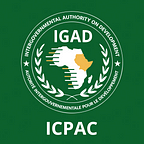Water and Food Security Policies for Adaptation in the Eastern Africa Region
By Winnie Khaemba (Climate Analytics) with Contributions from IGAD Climate Change Working Group.
The Eastern Africa region is classified as one of the most vulnerable to climate change. According to the latest report by the IPCC, the region will face increased drought, floods, heat extremes, and sea level rise, amongst other impacts, both in frequency and intensity.
Impacts on communities and biodiversity will be widespread, ranging from water and food scarcity, loss and damage to displacement, among other impacts. Using a policy triangle approach, a policy analysis undertaken as part of the Down2Earth project looked at climate adaptation, food security, and water policies in Eastern Africa. The policy triangle approach looks at the content, context, actors, and processes involved in policymaking.
The analysis uncovers vital policy messages. Firstly, there is lack of adequate resources to finance Eastern African nations’ Nationally Determined Contributions (NDCs), with over 80% of their budgets dependent on international climate finance. All the ten NDCs assessed have a significant percentage of their adaptation targets conditional or entirely reliant on international climate finance.
Secondly, water policies face enforcement gaps in policy content and practice. This means that despite policies being detailed and having clear strategies, the lack of clear guidelines makes them difficult to enforce.
Some water policies have developed guidelines, but enforcement still needs improvement. This results from many factors, including little awareness, inadequate infrastructure, inadequate capacity, limited personnel, and lack of finance to implement e.g. limited resources from the Kenya Water Trust Fund to fund Water Resource User Associations (WRUAs), etc.
Thirdly, although food security policies contain comprehensive strategies to combat climate change impacts, they fail to focus on the livestock sector, which is a significant contributor to the region’s economy and the primary livelihood source, covering 75% of the land area, including drylands, which are the worst hit by climate change.
Focusing on policies and strategies that enable this sector to adapt to climate change impacts is crucial for building resilience at the community level.
In conclusion, creating innovative funding approaches, including an economy-wide approach, and exploring new funding sources, could help reduce Eastern African countries’ dependency on international climate finance. Leveraging the loss and damage facility may be a pathway to changing the narrative around climate finance.
Additionally, a more efficient and enforceable system of guidelines and procedures for water policies, and an emphasis on food security policies that focus on the livestock sector, will offer a more comprehensive approach to adaptation in the Eastern Africa region.
A detailed report of the analysis can be accessed here.
